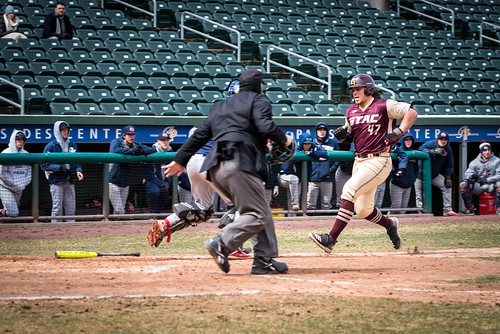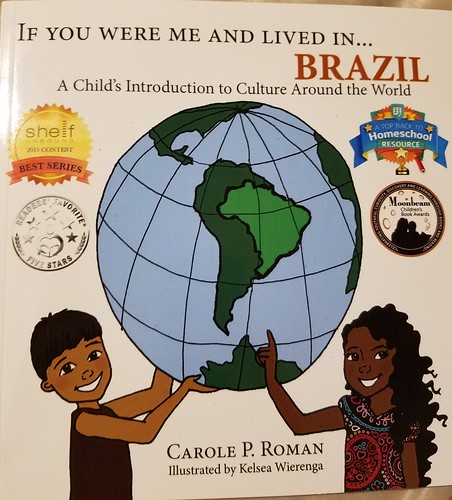Les. The four inclusion criteria have been shown beneath. Initially, either randomized or nonrandomized trials have been PubMed ID:https://www.ncbi.nlm.nih.gov/pubmed/7048075 incorporated in our analysis. Secondly, we chose the myopic individuals with or without astigmatism, and the myopic degree ranged from to degrees. Thirdly, the research together with the comparison between SMILE and FSLASIK had been accepted. Also, the key outcomes we observed included Ocular Surface Disease Index (OSDI) scores, tear film breakup time (TBUT), Schirmer Test and corneal sensitivity. We extracted the datum ahead of surgery and within the six month followup. The exclusion criteria integrated evaluations, meetings, letters, research with no comprehensive information, with inconsistent or erroneous information and a few duplicate publications. Screening Course of action Two independent reviewers (Cai WT and Wei QQ) search on the database and filter the studies in line with our predefined criteria. We attain the agreements just after our . We exclude the studies which report the identical clinical trials and choose the one latest. Excellent Assessment We applied the validated Downs and Black scale to conduct our high quality assessment simply because the studies incorporated each randomized and nonrandomized ones. The evaluation indexes are shown as followed, for example MedChemExpress TMC647055 (Choline salt) reporting, external validity, internal validity (bias and confounding), and energy. Two authors (Ren CD and Liu QY) independently assessed the research and reached the consensus right after negotiation. We regarded the research  with the score greater than sixteen had adequate excellent.Figure Flow diagram on the literature search within this Metaanalysis.Information Extraction We extracted the following informationname, publication year, trial location, study style, followup period, intervention, characteristics of population, preoperative spherical equivalent. A second reviewer doublechecked all data. Statistical Evaluation RevMan. computer software was made use of to execute this Metaanalysis. The followup intervals integrated preoperation, one particular week, one month, 3 months and six months postoperation. Heterogeneity was assessed by calculating the I statistic and by performing a Chisquare test (assessing the Pvalue). I is viewed as to be indicative of substantial heterogeneity. Each randomeffects and fixedeffects models could be applied in our analysis, which was dependent around the heterogeneity in between two comparable groups. We examined the Pvalue plus the degree of overlap in self-confidence intervals (CIs). The Pvalue significantly less than . recommended the statistically significance. And we also created the forest plot to show the comparison clearly. Final results Literature Search Figure would be the flowchart displaying our literature retrieval course of action. Following our Sapropterin (dihydrochloride) detailed browsing on the database based on the key terms, completely reports have been retrieved. We identified eligible research on basis of titles and abstracts and got the full text of articles. We detailedly browsed the full text of articles and lastly, reports have been excluded. The comparisons in ten research were not SMILE versus FSLASIK so they had been ruled out. Thirty studies’ outcomes did not conclude dry eye or corneal sensitivity, two didn’t have total datum, a single was case report, ten had been review, 3 weren’t potential studies and 3 had been animals’ study. Qualities of Included Research Table showed traits of our incorporated research. We identified eyes entirely, and of those, SMILE was applied to eyes and FSLASIK was applied to other people. The typical age ranged from . to . years old. Seven studies in our analysis were nonrandomized.Les. The 4 inclusion criteria had been shown below. At first, either randomized or nonrandomized trials have been PubMed ID:https://www.ncbi.nlm.nih.gov/pubmed/7048075 included in our analysis. Secondly, we chose the myopic individuals with or without astigmatism, along with the myopic degree ranged from to degrees. Thirdly, the research together with the comparison involving SMILE and FSLASIK have been accepted. Moreover, the key outcomes we observed incorporated Ocular Surface Disease Index (OSDI) scores, tear film breakup time (TBUT), Schirmer Test and corneal sensitivity. We extracted the datum just before surgery and inside the six month followup. The exclusion criteria incorporated testimonials, meetings, letters, research devoid of total information, with inconsistent or erroneous data and some duplicate publications. Screening Approach Two independent reviewers (Cai WT and Wei QQ) search around the database and filter the studies in line with our predefined criteria. We attain the agreements after our . We exclude the studies which report precisely the same clinical trials and pick the a single most recent. High-quality Assessment We employed the validated Downs and Black scale to conduct our top quality assessment for the reason that the research incorporated each randomized and nonrandomized ones. The evaluation indexes are shown as followed, for instance reporting, external validity, internal validity (bias and confounding), and power. Two authors (Ren CD and Liu QY) independently assessed the research and reached the consensus just after negotiation. We viewed as the studies with the score greater than sixteen had enough top quality.Figure Flow diagram from the literature search in this Metaanalysis.Data Extraction We extracted the following informationname, publication year, trial place, study design, followup period, intervention, traits of population, preoperative spherical equivalent. A second reviewer doublechecked all data. Statistical Analysis RevMan. application was applied to carry out this Metaanalysis. The followup intervals integrated preoperation, one week, 1 month, three months and six months postoperation. Heterogeneity was assessed by calculating the I statistic and by performing a Chisquare test (assessing the Pvalue). I is regarded to be indicative of significant heterogeneity. Both randomeffects and fixedeffects models might be applied in our analysis, which was dependent on the heterogeneity amongst two comparable groups. We examined the Pvalue plus the degree of overlap in confidence intervals (CIs). The Pvalue much less than . recommended the statistically significance. And we also created the forest plot to show the comparison clearly. Results Literature Search Figure will be the flowchart showing our literature retrieval process. Soon after our detailed browsing around the database in accordance with the key terms, totally reports had been retrieved.
with the score greater than sixteen had adequate excellent.Figure Flow diagram on the literature search within this Metaanalysis.Information Extraction We extracted the following informationname, publication year, trial location, study style, followup period, intervention, characteristics of population, preoperative spherical equivalent. A second reviewer doublechecked all data. Statistical Evaluation RevMan. computer software was made use of to execute this Metaanalysis. The followup intervals integrated preoperation, one particular week, one month, 3 months and six months postoperation. Heterogeneity was assessed by calculating the I statistic and by performing a Chisquare test (assessing the Pvalue). I is viewed as to be indicative of substantial heterogeneity. Each randomeffects and fixedeffects models could be applied in our analysis, which was dependent around the heterogeneity in between two comparable groups. We examined the Pvalue plus the degree of overlap in self-confidence intervals (CIs). The Pvalue significantly less than . recommended the statistically significance. And we also created the forest plot to show the comparison clearly. Final results Literature Search Figure would be the flowchart displaying our literature retrieval course of action. Following our Sapropterin (dihydrochloride) detailed browsing on the database based on the key terms, completely reports have been retrieved. We identified eligible research on basis of titles and abstracts and got the full text of articles. We detailedly browsed the full text of articles and lastly, reports have been excluded. The comparisons in ten research were not SMILE versus FSLASIK so they had been ruled out. Thirty studies’ outcomes did not conclude dry eye or corneal sensitivity, two didn’t have total datum, a single was case report, ten had been review, 3 weren’t potential studies and 3 had been animals’ study. Qualities of Included Research Table showed traits of our incorporated research. We identified eyes entirely, and of those, SMILE was applied to eyes and FSLASIK was applied to other people. The typical age ranged from . to . years old. Seven studies in our analysis were nonrandomized.Les. The 4 inclusion criteria had been shown below. At first, either randomized or nonrandomized trials have been PubMed ID:https://www.ncbi.nlm.nih.gov/pubmed/7048075 included in our analysis. Secondly, we chose the myopic individuals with or without astigmatism, along with the myopic degree ranged from to degrees. Thirdly, the research together with the comparison involving SMILE and FSLASIK have been accepted. Moreover, the key outcomes we observed incorporated Ocular Surface Disease Index (OSDI) scores, tear film breakup time (TBUT), Schirmer Test and corneal sensitivity. We extracted the datum just before surgery and inside the six month followup. The exclusion criteria incorporated testimonials, meetings, letters, research devoid of total information, with inconsistent or erroneous data and some duplicate publications. Screening Approach Two independent reviewers (Cai WT and Wei QQ) search around the database and filter the studies in line with our predefined criteria. We attain the agreements after our . We exclude the studies which report precisely the same clinical trials and pick the a single most recent. High-quality Assessment We employed the validated Downs and Black scale to conduct our top quality assessment for the reason that the research incorporated each randomized and nonrandomized ones. The evaluation indexes are shown as followed, for instance reporting, external validity, internal validity (bias and confounding), and power. Two authors (Ren CD and Liu QY) independently assessed the research and reached the consensus just after negotiation. We viewed as the studies with the score greater than sixteen had enough top quality.Figure Flow diagram from the literature search in this Metaanalysis.Data Extraction We extracted the following informationname, publication year, trial place, study design, followup period, intervention, traits of population, preoperative spherical equivalent. A second reviewer doublechecked all data. Statistical Analysis RevMan. application was applied to carry out this Metaanalysis. The followup intervals integrated preoperation, one week, 1 month, three months and six months postoperation. Heterogeneity was assessed by calculating the I statistic and by performing a Chisquare test (assessing the Pvalue). I is regarded to be indicative of significant heterogeneity. Both randomeffects and fixedeffects models might be applied in our analysis, which was dependent on the heterogeneity amongst two comparable groups. We examined the Pvalue plus the degree of overlap in confidence intervals (CIs). The Pvalue much less than . recommended the statistically significance. And we also created the forest plot to show the comparison clearly. Results Literature Search Figure will be the flowchart showing our literature retrieval process. Soon after our detailed browsing around the database in accordance with the key terms, totally reports had been retrieved.  We identified eligible studies on basis of titles and abstracts and got the full text of articles. We detailedly browsed the full text of articles and lastly, reports were excluded. The comparisons in ten studies weren’t SMILE versus FSLASIK so they have been ruled out. Thirty studies’ outcomes didn’t conclude dry eye or corneal sensitivity, two didn’t have full datum, 1 was case report, ten had been evaluation, 3 were not potential studies and three were animals’ study. Traits of Included Research Table showed characteristics of our integrated research. We identified eyes completely, and of those, SMILE was applied to eyes and FSLASIK was applied to others. The average age ranged from . to . years old. Seven research in our evaluation have been nonrandomized.
We identified eligible studies on basis of titles and abstracts and got the full text of articles. We detailedly browsed the full text of articles and lastly, reports were excluded. The comparisons in ten studies weren’t SMILE versus FSLASIK so they have been ruled out. Thirty studies’ outcomes didn’t conclude dry eye or corneal sensitivity, two didn’t have full datum, 1 was case report, ten had been evaluation, 3 were not potential studies and three were animals’ study. Traits of Included Research Table showed characteristics of our integrated research. We identified eyes completely, and of those, SMILE was applied to eyes and FSLASIK was applied to others. The average age ranged from . to . years old. Seven research in our evaluation have been nonrandomized.
